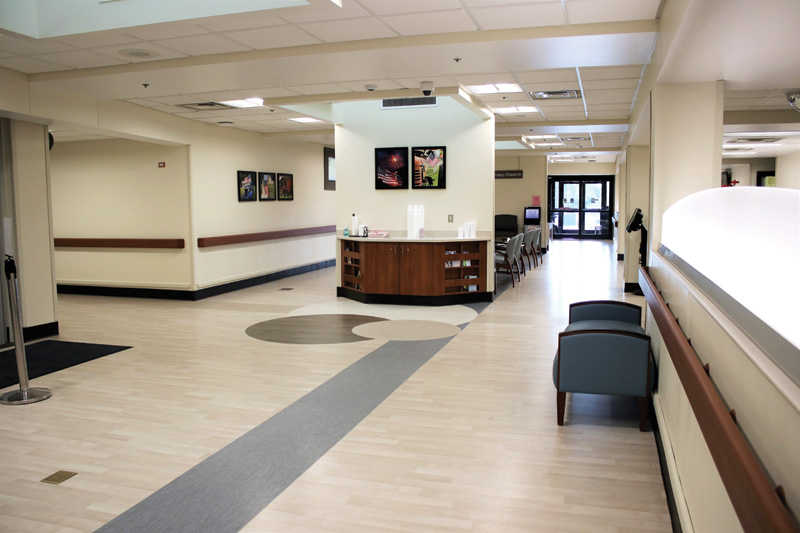By David Gross
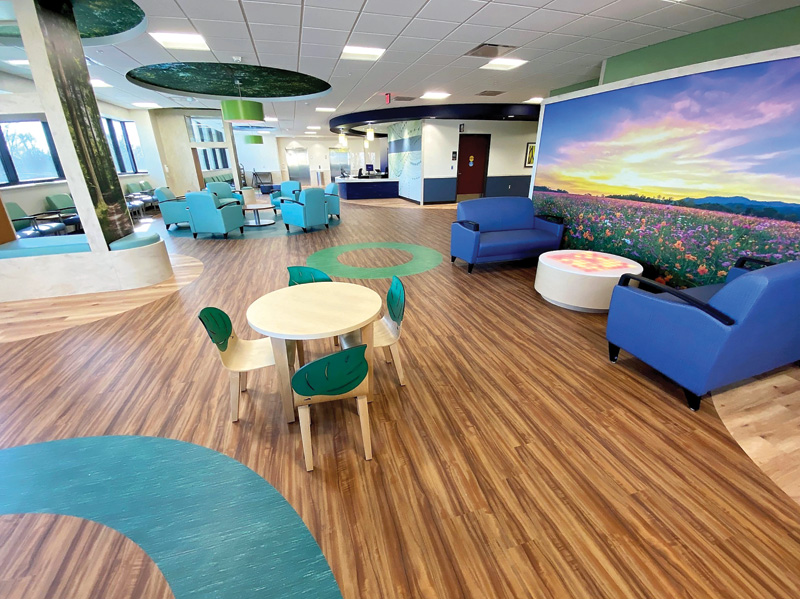
Natural light sources and comfortable acoustics have become hallmarks of well-designed modern spaces, promoting health and wellbeing, sustainability, and aesthetic appeal. To achieve optimal light and sound effects, designers account for many elements, anticipating how they will all interact when assembled in one space. In virtually every project, flooring is the one element that often has an outsized impact.
Typically representing the largest surface area of continuous material in an interior design, flooring products—and the level of expertise with which they are installed—are key choices for projects where natural light and acoustics are priorities. As such, specifying a certified flooring contractor is imperative to ensure proper installation of the flooring material and its long-term performance. To fully appreciate the role of a certified flooring contractor, it is essential to understand how their expertise enhances natural light and acoustics. Here is a closer look at some skills they bring to the floor.
Avoiding glaring errors
Architects and designers often prioritize natural light in their projects because it enhances the aesthetic and functional aspects of a space while improving energy efficiency. As an aesthetic element, natural light can create a warm, inviting atmosphere and highlight textures, colors, and architectural features. It adds depth and dimension that artificial lighting often cannot achieve. Natural light also fosters a sense of openness and outdoor connection, which can be especially appealing in urban environments where green spaces are limited. Studies indicate exposure to natural light improves mood, productivity, and mental health while reducing eye strain in workspaces.
Natural light also offers energy savings. By maximizing natural light sources and limiting artificial lighting, architects and designers can help lower a building’s energy use and HVAC loads and support Green Building Standards. Natural light sources align with sustainability goals and certification programs (such as LEED) that prioritize energy efficiency and occupant wellbeing. When using natural light, designers pay careful attention to window placement and orientation, precisely positioning windows, skylights, and light wells to optimize illumination throughout the day.
Flooring is important in creating these effects and gaining these efficiencies by reflecting and intensifying light or absorbing and lessening its intensity. In spaces where natural light is a central feature, designers must carefully select flooring materials, assessing how the natural light interacts with different surfaces. For instance, surfaces such as polished tiles, glossy vinyl, and light-colored flooring are highly reflective and will brighten a space. Conversely, matte and dark surfaces such as carpets, dark tiles, and darker woods absorb light, creating a dimmer atmosphere. Flooring choices can also influence the perceived size of a room. Lighter floors create a sense of spaciousness, while darker floors provide a more intimate feel.
One of the biggest challenges for flooring contractors working in areas with abundant natural light is managing the reflectivity and glare that accompany certain materials, such as concrete and ceramic tiles. In these applications, natural light can showcase a stunningly flawless installation, but only if the installation is, in fact, flawless. However, the challenge for the contractor is that natural light can also highlight every imperfection, leaving no room for even the smallest error.
An experienced contractor will start with impeccable subfloor preparation to deliver near-perfect results. A flat, smooth, and clean subfloor is essential, as any imperfection will be magnified in natural light. Other key installation strategies a certified installer will employ include:
- Seaming—Regardless of the flooring material, a knowledgeable contractor will position seams perpendicular to the natural light source whenever possible to draw less attention to the eye. Conversely, if seams are parallel to the light source, the light will emphasize the seam, and the slightest deviation from a perfectly straight line or level surface will become a focal point.
- Leveling: Leveling is critical when installing materials such as luxury vinyl tile (LVT) or ceramic tile. Without consistency and precision, “ledging” can occur. Ledging refers to the shadows cast by any sections of flooring that sit slightly higher than their neighbors. In a large, open, naturally lit space, ledging draws attention to these unsightly irregularities.
- Polishing—While some degree of shine is often desired with hard flooring materials, it can easily cross into excessive glare and reflectivity without proper care. Intense glare from sunlight can be blinding to occupants, and mirror-like surfaces can be unwanted or, at worst, create privacy concerns. To achieve a desirable level of reflectivity and shine, experienced contractors work with architects, designers, and specifiers to calibrate polished finishes using a scale from matte to highly polished. Well-calibrated polishing of materials such as concrete and ceramic tile can even be used to earn green building credits by enhancing natural light and reducing the need for artificial illumination.
The complexity of working with natural light underscores the need for an experienced, certified flooring contractor who understands its unique challenges. From subfloor preparation to strategic seaming, precise leveling, and controlled polishing, each step requires meticulous attention to detail to ensure the flooring enhances rather than detracts from overall lighting effects.

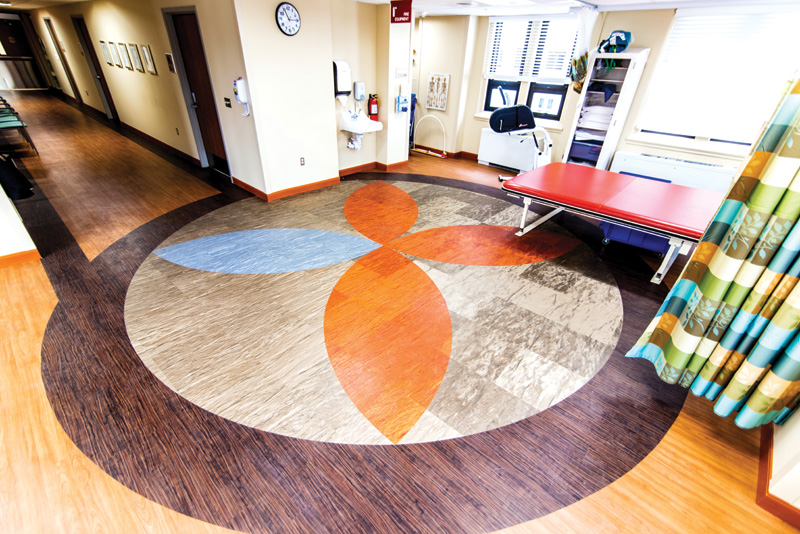
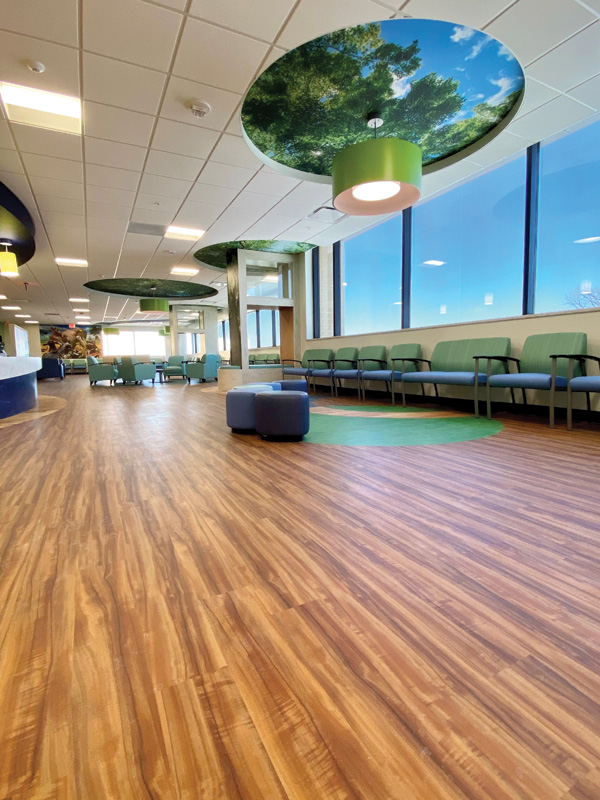
Sounding off
In both residential and commercial spaces, managing sound is critical for creating environments that are functional, comfortable, and suited to their intended purpose. Whether minimizing footfall noise in a multifamily residence, reducing echo in an open office, or protecting privacy in a healthcare setting, flooring plays a pivotal role in controlling sound transmission and absorption. In every case, achieving optimal acoustics requires more than just selecting the right materials; it also requires expertise in how those materials are installed.
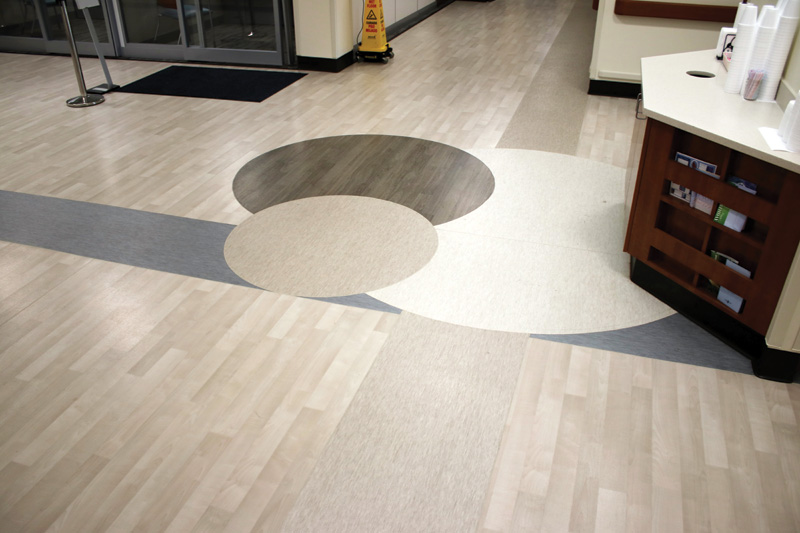
Certified flooring contractors possess a unique skill set, combining technical knowledge of flooring materials with specialized installation techniques to address the intricate relationship between flooring and acoustics. These professionals understand the nuances of soundproofing underlayments, the acoustic qualities of different flooring materials, and other advanced products designed to reduce noise transmission and enhance sound quality. Examples of soundproofing underlayments installers may choose from include:
- Rubber—Made from recycled rubber, these underlayments provide excellent impact noise reduction by absorbing vibrations and sound energy before they travel through the subfloor. They are durable, moisture-resistant, and suitable for various flooring types, including hardwood, tile, and laminate.
- Cork—Cork’s cellular structure naturally absorbs sound and prevents it from transferring to adjacent spaces. It also offers thermal insulation, making it a dual-purpose solution. Cork underlayments are often used under hardwood and laminate flooring.
- Foam—Made from polyethylene or polypropylene, foam underlayments reduce sound by creating a cushioning layer that minimizes impact noise such as footfalls. Foam is commonly used under laminate or engineered wood floors. For improved performance, some foam options are enhanced with an additional sound barrier layer.
- Felt—Comprising recycled fibers such as jute or synthetic materials, felt underlayments are dense and provide excellent sound absorption. Felt is often used with hardwood or engineered wood flooring to reduce impact and airborne noise.
- Acoustic mats—Typically made from rubber or synthetic materials, acoustic mats are placed beneath the flooring to act as a vibration barrier. They are especially effective under tile or stone flooring, where hard surfaces can amplify sound.
- Mass-loaded vinyl (MLV)—MLV is a dense, flexible material underlayment that blocks airborne noise. It can be combined with other underlayment types to enhance soundproofing for virtually any flooring material.
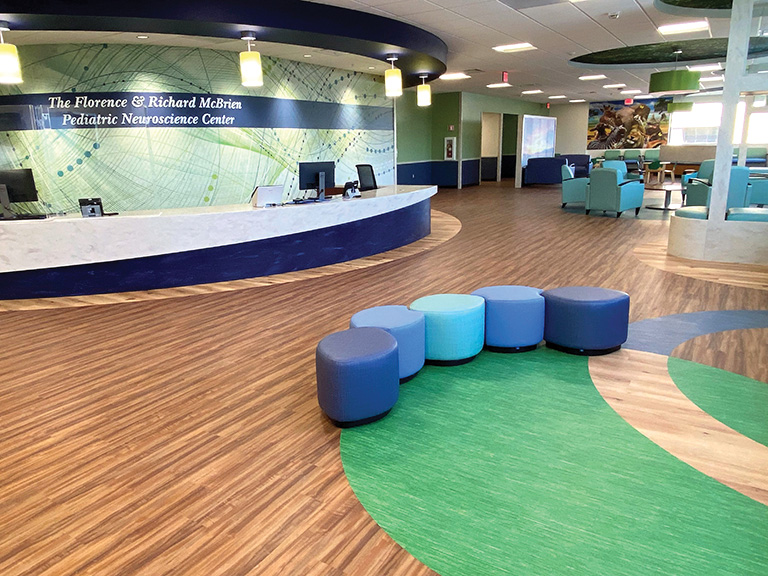

When appropriately matched with flooring material and properly installed, underlayments help create quieter, more comfortable environments by absorbing impact noise and reducing airborne sound transmission.
One environment that is particularly sensitive to sound control is healthcare. For example, hospitals have diverse flooring requirements absorption on the function of each space. In areas such as check-in/check-out, lobbies, and waiting rooms, sound dampening and absorption are often accomplished with soft flooring, most commonly carpet. Sound control in these areas helps protect patient confidentiality by limiting voice travel. It also contributes to creating a quieter, more calming environment.
Comparatively, patient treatment areas have different priorities. Harder, more durable materials such as LVT are necessary for rigorous sanitation practices and patient and equipment mobility. In hallways and patient rooms, flooring must be easy to clean and provide a smooth surface for rolling equipment, such as gurneys, wheelchairs, and carts. While sound management remains important, it must be balanced with other priorities such as safety, hygiene, and ease of movement. Flooring contractors who work in healthcare must follow specific protocols, and many complete Infection Control Risk Assessment (ICRA) training to learn these specialized skills. For specifiers, an ICRA-certified contractor is a strong indicator of expertise in meeting these unique requirements.
In commercial spaces (e.g. educational facilities, fitness centers, and corporate environments), designers can choose flooring materials that meet their aesthetic and acoustic needs. Popular flooring materials that offer both color and style choices and acoustic enhancements include:
- Carpet and carpet tiles for occupant comfort, sound absorption, and design flexibility. Carpet products are ideal for quieting spaces (e.g. reading areas and theater aisles).
- Cork for its eco-friendly, naturally resilient qualities and sound absorption. Cork is perfect for quiet zones in libraries and backstage areas in theaters.
- Rubber offers exceptional durability, effective noise reduction, and a non-slip surface, and it is well-suited for high-traffic, heavy-use spaces such as fitness and recreation facilities.
- LVT with acoustic backing can deliver the look of harder materials such as wood or stone with sound-dampening properties, making it a versatile choice for corporate and retail spaces.
- Felt and textile flooring provide the softness of carpet with modern design aesthetics and excellent sound absorption, making them popular for creating unique spaces.
Delivering the desired look, performance, and acoustic effect of a flooring material requires a technical understanding of how the chosen material responds to sound. It also requires expertise in subfloor preparation and installation techniques specific to each material.
Perfect harmony
Many features of well-designed spaces create successful natural light and acoustic effects, but flooring plays one of the most significant roles. By specifying a certified flooring contractor, building professionals know that installation will be executed with technical expertise and attention to detail. These experts can also recommend renewable materials and innovative solutions supporting sustainability initiatives, including helping projects qualify for green building credits. With the right team, designers can fully optimize a space’s aesthetic and functional potential.
Author
David Gross is the executive director of INSTALL, the leading organization for floorcovering installation training and certification in North America at INSTALLFloors.org. Prior to this role, Gross was a full-time instructor for the Eastern Atlantic States Carpenter’s Apprenticeship Training Fund, where he achieved Level III Advanced Instructor Certification. He holds a bachelor’s degree in economics, an MBA, and is a BCSP Certified Safety Professional, with more than 30 years of hands-on floor installation experience.
Key Takeaways
Integrating abundant natural light in modern architecture has become a hallmark of well-designed spaces, promoting health, sustainability, and aesthetic appeal. However, to fully capitalize on these benefits, flooring materials must be carefully specified to address key considerations such as glare and acoustics. This article explores the critical role flooring plays in enhancing spaces with natural light by focusing on materials with low-glare finishes to prevent visual discomfort and maintain design integrity. Additionally, it delves into solutions for subfloor preparation and flooring materials that reduce sound transmission, sound, creating acoustically comfortable environments in both residential and commercial applications.



